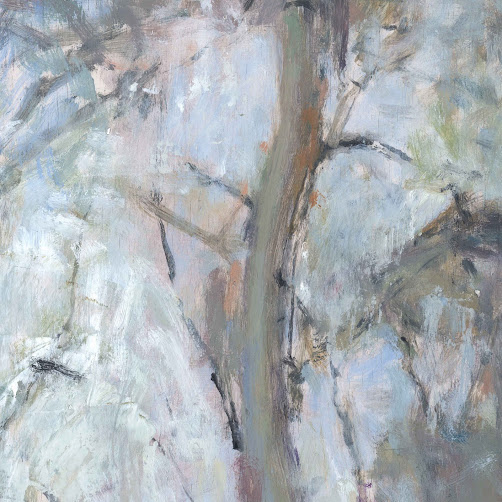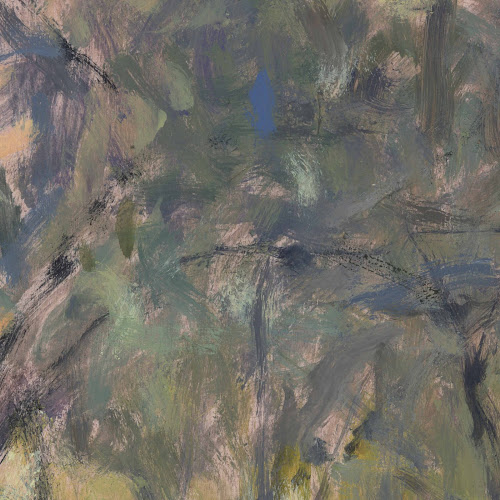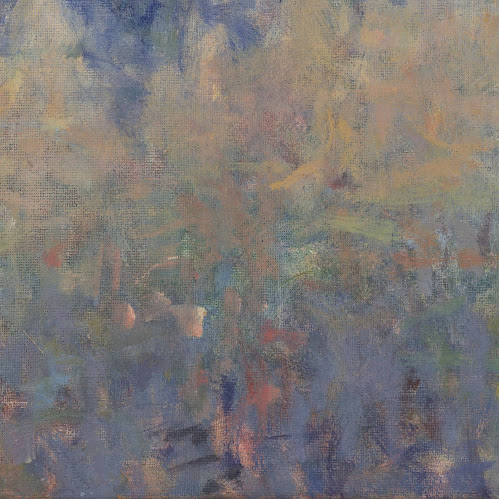James Brown
“Miena,
Tasmania”, 2025
Oil on wood
panel
Size: 50 x 39.8
cm
Inspired by a
2022 photograph of scrubland on the outskirts of Miena, Tasmania, near the
southern end of Great Lake in the Central Highlands, I created this painting. The
landscape's inherent beauty caught my attention, particularly the interplay of
muted grey tones punctuated by vibrant tufts of green grass and exposed ochre
earth. The slender gum trees, their bark
shedding and branches reaching elegantly skyward, also held a strong visual
appeal. These spindly forms, with their
sinuous lines, resonated with the organic flow and rhythm I sought to capture.


















































